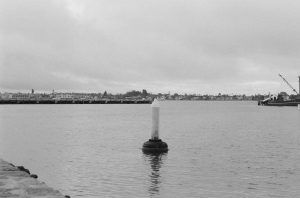The following entry is in the context of an interesting movement occurring within Mormonism, and for outsiders – including Latter-day Saints – it may appear confusing or nonsensical. If you stumble across it accidentally, please accept my apologies for bothering you with these strange curiosities. For those curious souls, I don’t have a link to a good background and summary of the movement, except perhaps the Prayer for Covenant and the Answer and Covenant in the movement’s scriptures (identified as “Restoration Scriptures” herein).
The Restoration Scriptures include two items that were originally short blog posts entitled “Babylon” and “Lamentation for Baghdad” on Denver Snuffer’s blog. Due to the brevity of these posts, I hope that Mr. Snuffer will not object to my inclusion of them in there entirety below, for ease of discussion.
The blog entry entitled “Babylon” was published on February 18, 2015, and recites: “The God of Heaven tells me all the world should pray that Baghdad does not fall.” It is also found as Section 168 of “Teachings and Commandments” in the Restoration Scriptures.
The entry entitled “Lamentation for Baghdad” was published on May 28, 2015, and recites: “Days of distress are upon Baghdad and the days of their troubles are begun. Distress shall overtake them, for those who come shall have no pity.” It is also found as Section 170 of “Teachings and Commandments.”
The covenant community seems to have taken interest in these two blog posts, as evidenced by their inclusion in the Restoration Scriptures. I, too, find them interesting, although I must admit that I also find them rather cryptic and wonder about their meaning. The only detailed discussion of which I am aware is an excellent analysis by Adrian Larsen, in which he discusses Baghdad and the region’s historic role, the terror group ISIS’s interest in it, and ISIS’s declaration of a caliphate.
Notwithstanding the excellence of Adrian’s analysis, my own consideration of the blog entries leaves me wondering if a fixation on Baghdad and ISIS tends to misleading conclusions about the meaning of these statements. I would certainly tend to look at the matter in the same literal fashion, but the title of the first post, connecting Baghdad with Babylon, suggests to me that the matter ought to be looked at a little differently. Admittedly, this raises more questions than answers, but the questions are what I wanted to raise in this post anyway.
Where I perhaps differ from Adrian is that without that title, I would have placed little emphasis on Baghdad’s proximity to Babylon. I have tended to consider them as separate, and thus never associated the two in any way other than geographic proximity. However, with the title “Babylon” appearing to equate the two, I am no longer inclined to think simply of “Baghdad” the city, or “Babylon” the city, but in terms of Babylon as used as a representation of the world in the scriptures. Such a perspective suggests it is not the fall, distress, and troubles of an Iraqi city that are at issue, but the fall, distress, and troubles of our own society. Our own “days of distress” are upon us, “and the days of [our] troubles are begun.” The ultimate message would seem to be: “flee to Zion.”
This raises several questions:
What does “Baghdad” mean in the statements? Is it the Iraqi city? Is it Babylon (the world)? Is it something else entirely?
Are the statements about us, rather than terror groups and inhabitants of Iraq?
What would it mean to pray that we, or the society in which we live, “does not fall?” What does this “fall” that we’re at risk of constitute, or look like? What, if anything beyond prayer, can be done to prevent or postpone it?
What are the distresses and troubles that are upon us?
Who is coming, who “shall have no pity?”
Why is “Baghdad” used, instead of some other city that we might better associate with modern-day Babylon, such as “Washington, D.C.,” “New York,” “London,” or “Brussels,” etc.?
I certainly wish I had answers. I am a terrible student of scripture, incompetent even to ask intelligent questions. The above are much more than I’d normally think to ask.
On the other hand, a Foreign Policy magazine article suggests that some remnants of ISIS are hanging out around Baghdad these days.





